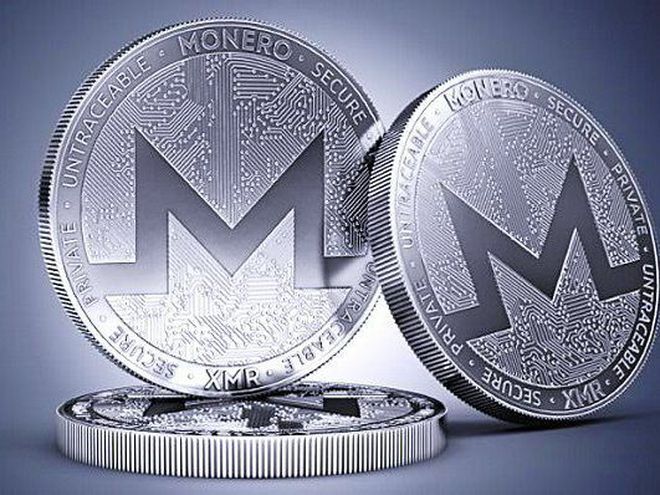The most popular cryptocurrencies after Bitcoin
Altcoin (Alternative Coin) is a generic name for money simulated Bitcoin, created with the aim of improving Bitcoin's weaknesses. While some altcoins have impressive features that Bitcoin doesn't have, such as the ability to process more transactions per second or the use of Proof of Stake (PoS) consensus algorithms, none yet. Which creates a highly secure network like Bitcoin.
Ethereum (ETH)

Ethereum is second in popularity
Ethereum is currently the second most popular cryptocurrency after Bitcoin. Ethereum was introduced by Vitalik Buterin at the end of 2013 and the system was launched in 2015. This year, the Ethereum founding team plans to change the PoW algorithm to the PoS algorithm. This move will allow the Ethereum network to run with less energy and improve transaction speeds. This is seen as an alternative to Bitcoin's previous PoW mechanism.
As of January 2021, ETH's market cap has been close to 19% of Bitcoin's size. According to the introduction, Ethereum coin can be used to 'encrypt, decentralize, secure, and transact anything'. As of January 2021, Ethereum (ETH) has a market cap of $ 138.3 billion and a value of 1 token = $ 1,218.59.
Litecoin (LTC)
Litecoin has been around since 2011 and was one of the first cryptocurrencies to follow Bitcoin's footsteps with the intention of being a less resource-intensive version. Litecoin creator Charlie Lee - former MIT student and former Google engineer. Litecoin is based on the open source global payment network, not controlled by any agency, using the Scrypt algorithm as PoW.
Although Litecoin is similar to Bitcoin in many ways, it has a faster block generation rate, so the transaction confirmation time is also faster. More and more units are accepting transactions with Litecoin. As of January 2021, Litecoin's market cap was $ 10.1 billion and the value per token was $ 153.88.
Cardano (ADA)
Cardano is a cryptocurrency created by a team of engineers, mathematicians, and crypto experts. The co-founder of the project is Charles Hoskinson - also one of the five original founding members of Ethereum. After an internal conflict, he left to build the Cardano project.
Cardano coin is seen as a competitor of Ethereum thanks to the use of PoS algorithm and possesses more promising blockchain technology. However, Cardano is still in the development stage and has a long way to go. As of January 2021, Cardano has a market cap of $ 9.8 billion and an ADA is worth $ 0.31.
Tether (USDT)
Launched in 2014, Tether belongs to a group of cryptocurrencies known as "stablecoins". Since digital currencies like Bitcoin are volatile, stablecoins like Tether were created with the aim of stabilizing market value. Tether's price is tied to USD price. In January 2021, Tether was the third largest cryptocurrency by market cap, with a total market cap of $ 24.4 billion and value per token = $ 1.
Stellar (XLM)
Stellar is an open blockchain network designed to provide enterprise solutions by connecting financial institutions to execute large transactions. Transactions between banks and investment companies usually take a few days, involve many intermediaries and are expensive, can now be transferred almost instantly without intermediaries and cost very little. fees. Stellar's currency is Lumens (XLM). The Stellar network requires users to use Lumens to transact.
Stellar was created by Jed McCaleb - a founding member of Ripple Labs and developer of the Ripple protocol. Eventually Jed McCaleb abandoned Ripple and co-founded the Stellar Development Fund. Stellar Lumens has a market cap of $ 6.1 billion and is valued at $ 0.27 as of January 2021.
Monero (XMR)

The ring signature mechanism creates a hidden address for each transaction, and at the same time shuffles the user's address with another user group to make it difficult to find links between transactions.
Announced in April 2014, Monero is a secure, untraceable cryptocurrency with a focus on decentralization, privacy, and flexible scalability, making Monero easy to attract. gets the attention of the community and crypto enthusiasts. Monero's development is entirely based on community contribution. Monero preserves user privacy with a special technique called 'ring signature'.
This special technique makes Monero the favorite currency of the criminal world. As of January 2021, Monero has a market cap of $ 2.8 billion and each token is worth $ 158.37.
Polkadot (DOT)
Polkadot is a cryptocurrency that uses a PoS algorithm that aims to provide interoperability between different blockchains. Polkadot's founder is Gavin Wood - also a member of the core team of the Ethereum project.
Polkadot differs from Ethereum in that developers can create their own blockchain while using the security available on the Polkadot blockchain. This concept in Polkadot is called "shared security". As of January 2021, Polkadot has a market cap of $ 11.2 billion and 1 DOT = $ 12.54.
You should read it
- NASA will prioritize the recruitment of experienced scientists in blockchain and cryptocurrency
- TON - is the crypto currency expected to be the largest ICO in history to be superior to Bitcoin or Ethereum?
- French police successfully cracked down on a botnet that exploits 850,000 computers from more than 100 countries.
- Leaked information that Apple will enter the cryptocurrency field
- Is it possible to hack a Bitcoin wallet with a quantum computer
- The top 9 Bitcoin and cryptocurrency investment websites today
- 5 super fast ways to stop digging virtual money on web browser
- Discovering the new serious security vulnerability of Bitcoin can cause the whole system to crash
May be interested
- More than 500 million Facebook accounts are for sale on Telegram
 the verge said that in mid-january 2021, a bot appeared on telegram selling the phone numbers of more than 500 million accounts on facebook.
the verge said that in mid-january 2021, a bot appeared on telegram selling the phone numbers of more than 500 million accounts on facebook. - 7 steps to overcome when losing Internet connection on PC
 computers are everyday activity tools that you use for work and play. however, there will be times when they will generate annoying errors like not being able to connect to the internet. so, today i will guide you how to fix it when the computer cannot connect to the internet.
computers are everyday activity tools that you use for work and play. however, there will be times when they will generate annoying errors like not being able to connect to the internet. so, today i will guide you how to fix it when the computer cannot connect to the internet. - The new iPhone security feature puts Facebook at greatest risk
 apple's move in the name of privacy protection will affect advertisers on ios devices. apple will open an app that will give users a privacy option for sharing an advertising id (idfa, which was previously hidden in iphones).
apple's move in the name of privacy protection will affect advertisers on ios devices. apple will open an app that will give users a privacy option for sharing an advertising id (idfa, which was previously hidden in iphones). - Instructions to check the remaining memory space on Google Photos
 on june 1, 2021, google will stop providing unlimited photo storage for free on google photos.
on june 1, 2021, google will stop providing unlimited photo storage for free on google photos. - 2 best data recovery software on your computer and memory card
 if you accidentally delete important data (pictures, videos, documents ...) on your computer or memory card, you can use the following software to recover.
if you accidentally delete important data (pictures, videos, documents ...) on your computer or memory card, you can use the following software to recover. - Deepfake technology has the potential to disrupt financial markets
 deepfake artificial intelligence-based human facial synthesis and reconstruction technology is alarming the weakness of biometric security in the financial sector.
deepfake artificial intelligence-based human facial synthesis and reconstruction technology is alarming the weakness of biometric security in the financial sector.






 14 cryptocurrencies, the most popular digital currency today
14 cryptocurrencies, the most popular digital currency today CEO Bitcoin Magazine: Bitcoin affirms its role in the US Presidential race
CEO Bitcoin Magazine: Bitcoin affirms its role in the US Presidential race Survey: Italians seem to prefer online payment with Bitcoin over Visa or MasterCard
Survey: Italians seem to prefer online payment with Bitcoin over Visa or MasterCard 10 facts about Bitcoin
10 facts about Bitcoin Top 5 most popular cryptocurrencies in 2021
Top 5 most popular cryptocurrencies in 2021